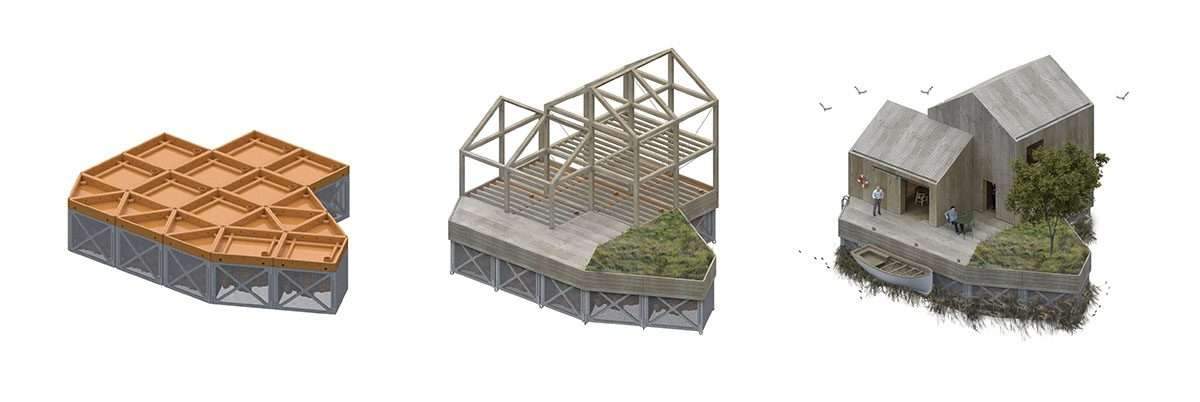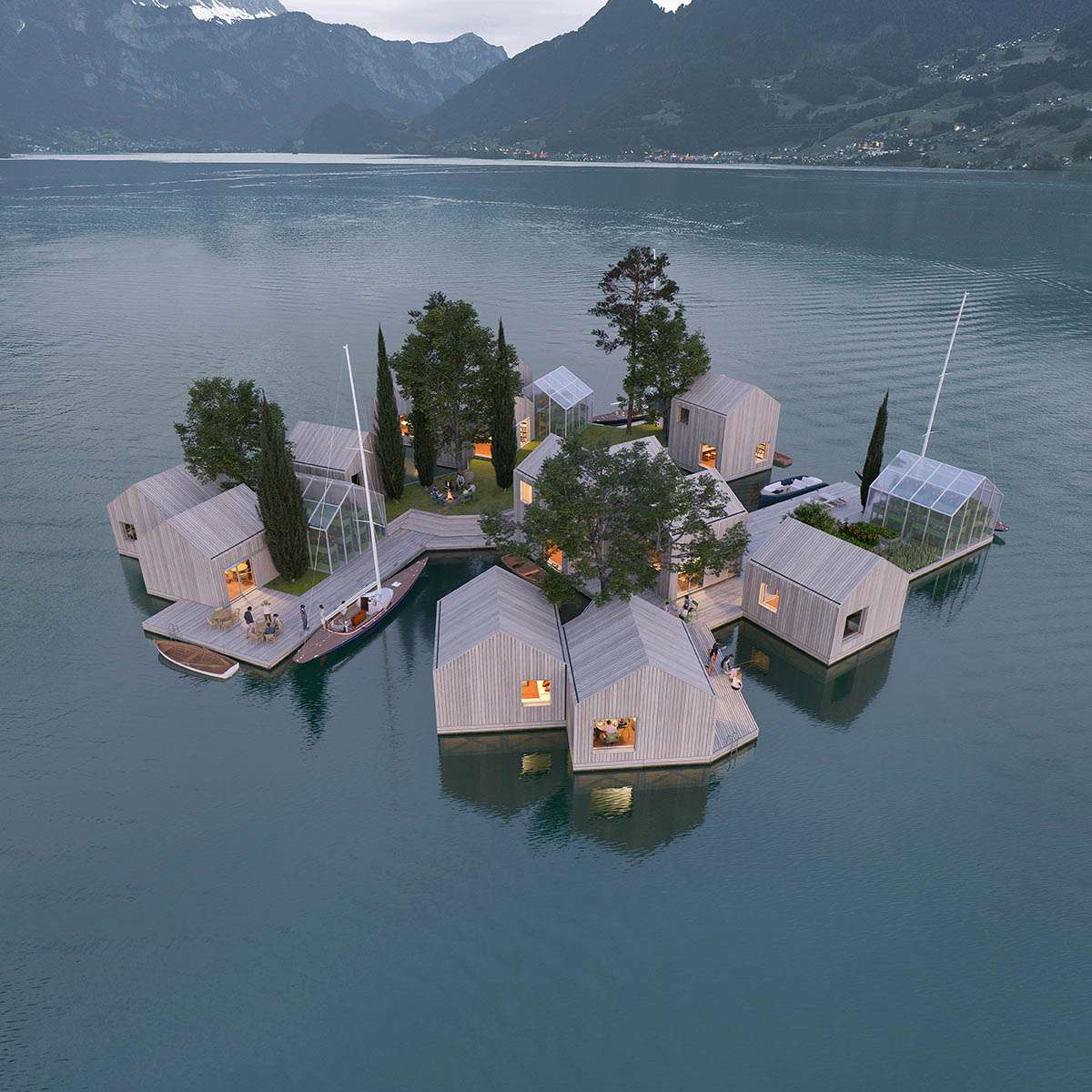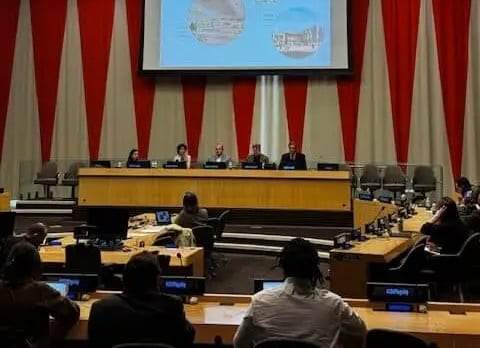Flat-packed floating structure design for living on the water
The Danish Maritime Architecture Studio MAST, located in Copenhagen, has proposed a new system of floating architecture.
This can offer adaptable and climate-resilient living units on the water.
The vision developed by MAST with the support of Hubert Rhomberg and venture studio Fragile.
This is to find effective alternative ways of living on water,
in response to rising sea levels around the world.
This new vision is called Land on Water.

مكونات التصميم
يتكون نظام MAST الجديد من وحدات عائمة معبأة بالعوامة مصنوعة من البلاستيك المعاد تدويره،
Design components
The new MAST system consists of pontoon-packed units made of recycled plastic,
which can be transported and assembled anywhere in the world in countless configurations.
The system provides a much more promising solution for building housing or infrastructure for anything on the water.
From houseboats in Seattle, to floating campsites in the middle of the Oslo Strait, to saunas on the bank of the Hobart River.

The growing recognition of sea level rise and the increased risk of urban flooding have contributed to a sharp increase in interest in building on water.
But current solutions, including polystyrene-filled concrete foundations and plastic buoys,
are inflexible, difficult to transport, and highly unsustainable.
To create this system, MAST inspired by the gabion cage method,
and an ancient technology uses aggregate-filled mesh cages to create extremely durable and low-cost foundations.”
Very flexible solution
The studio flipped the same concept to form modular cages that can filled with locally sourced recycled flotation materials that support the weight of any structure built on top.
This system also has a unique feature. For example, buoyancy can be added or modified
at any time if the above weight is added or if anything changes in the weighing scale.

As current market system solutions suggest other materials such as polystyrene filled concrete foundations and plastic buoys.
MAST believes that these systems are inflexible, difficult to transfer, and unsustainable for use.
The new system provides a safer floating foundation for housing construction and infrastructure,
due to sustainable materials and a new building system developed by Land on Water.
“Land on the water also promises a much better underwater environment than current solutions,
” Mast added.
While steel and concrete foundations usually treated with toxic anti-fouling paints.
Land on the water provides an ideal habitat for fish and crustaceans and an anchor point for mollusks and seagrass.”
The project also promises a “resilient and climate-resilient solution to the construction of new floating buildings”,
while it could also lead to an entirely new type of dynamic and organic floating community off the grid.

The project could be an alternative solution to the planned large floating cities that are currently under development.
Many mistakes made by urban planners in the mid-20th century repeated.
For more architectural news







